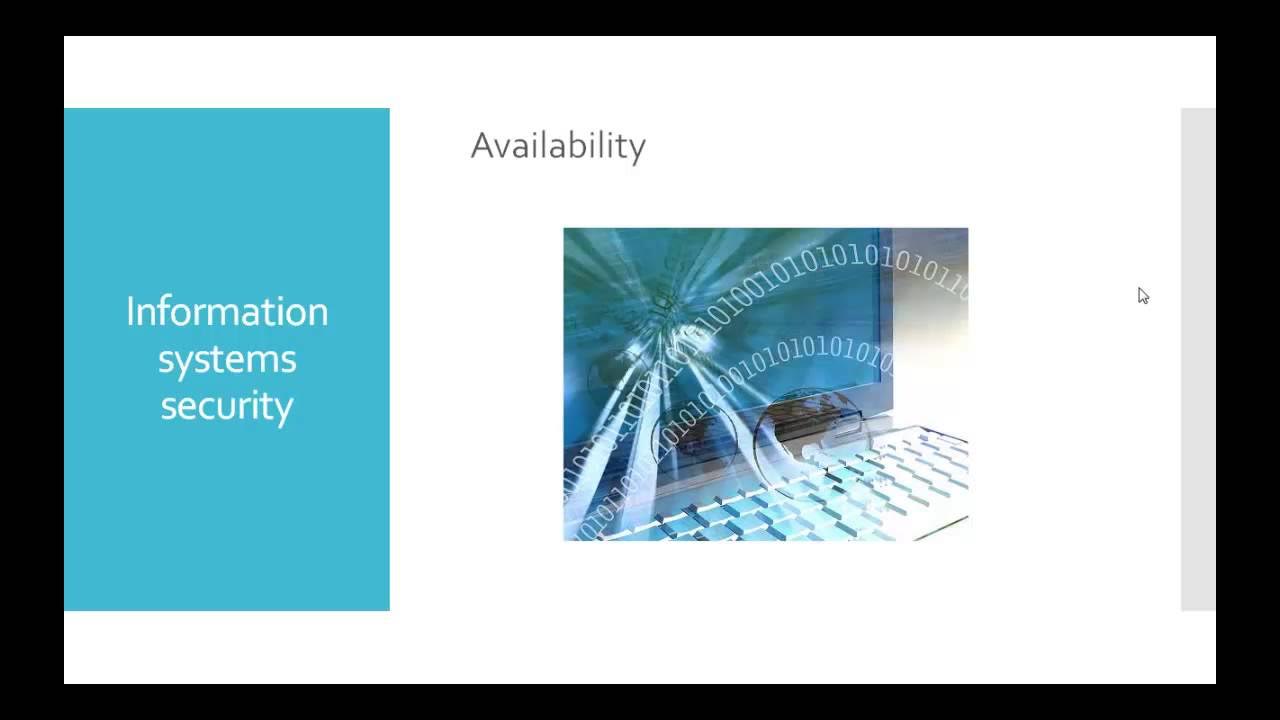II3230 - Keamanan Informasi - 02 Prinsip-prinsip Keamanan (section 1)
Summary
TLDRIn this lecture on information security, the focus is on the principles of securing data from various perspectives. The speaker discusses four key aspects: physical security, human factors, policies and procedures, and technical solutions like encryption and networking. The importance of physical security is emphasized through examples like protecting data centers and devices. Human vulnerability, such as social engineering attacks, is highlighted as a major threat. The speaker also touches on the role of organizational policies and procedures in ensuring security, before diving into the technical aspects, which will be covered in greater detail throughout the course.
Takeaways
- 😀 Information security can be viewed from multiple perspectives, and one approach is through the four aspects of physical security, human factors, policies and procedures, and technical aspects.
- 😀 Physical security is essential in protecting information, such as securing data centers, preventing unauthorized physical access, and safeguarding devices like laptops and external storage.
- 😀 The importance of human factors in information security cannot be underestimated. Human error or negligence, such as sharing weak passwords or falling for social engineering, can compromise a system's security.
- 😀 Social engineering, where individuals are manipulated into revealing sensitive information like PINs, is a key risk in information security.
- 😀 Policy and procedures (PNP) are crucial to guiding security practices in an organization. They help establish rules regarding password sharing, downloading software, and other security-related behaviors.
- 😀 Technical measures such as encryption and network security are vital to protecting data, but they must be backed by strong organizational policies and human awareness.
- 😀 Information security is not just about technical solutions but also involves management processes and procedures that define security practices across the organization.
- 😀 An organization's physical security infrastructure, such as the design of data centers and the placement of access points, plays a significant role in overall information security.
- 😀 Even advanced encryption and security algorithms are vulnerable if people do not adhere to proper security practices, such as keeping passwords confidential.
- 😀 The course will delve deeper into the technical aspects of data media, communication techniques, and encryption, emphasizing the practical implementation of information security measures.
Q & A
What are the four key aspects of information security discussed in the transcript?
-The four key aspects discussed are physical security, human factors, policies and procedures, and technical measures.
Why is physical security considered important in information security?
-Physical security is important because it protects hardware, such as servers and storage devices, from being tampered with, stolen, or damaged. This includes securing data centers, preventing unauthorized access, and safeguarding critical hardware like external storage or hard drives.
How can physical security issues impact an organization's data integrity?
-Physical security breaches can lead to unauthorized access to critical equipment, theft of sensitive data, or damage to infrastructure. For example, stolen hard drives containing confidential information can compromise data security and privacy.
What role do human factors play in information security?
-Human factors are often the weakest link in information security. If people share passwords, use weak passwords, or fall for social engineering tactics, security systems can be easily bypassed. Human error or negligence can expose systems to threats.
What is social engineering, and how does it impact security?
-Social engineering refers to the manipulation of individuals to divulge confidential information, such as passwords or PINs, by deceiving or tricking them. This can be done through techniques like flattery, manipulation, or impersonation, posing a significant threat to security.
What are policies and procedures (PNP) in the context of information security?
-Policies and procedures (PNP) are organizational guidelines and rules that govern the proper use of technology and data. They ensure secure practices, such as whether password sharing is allowed or if downloading certain programs is permitted, thus supporting overall information security.
Why are policies and procedures often overlooked in information security discussions?
-Policies and procedures are often overlooked because discussions tend to focus on technical aspects of security, such as encryption or firewalls. However, without clear policies and procedures, even the most advanced technical systems can be ineffective.
How do technical measures contribute to information security?
-Technical measures, such as encryption and secure network protocols, help protect data during storage and transmission. These tools are essential for ensuring data integrity and preventing unauthorized access to sensitive information.
What is the significance of encryption in information security?
-Encryption is critical because it transforms readable data into an unreadable format, making it difficult for unauthorized individuals to access or understand the information, thus protecting the confidentiality and integrity of sensitive data.
How do the four aspects of information security work together?
-The four aspects—physical security, human factors, policies and procedures, and technical measures—are interrelated. Physical security safeguards hardware, human factors address vulnerabilities caused by people, policies and procedures define safe practices, and technical measures provide the tools necessary to protect data and communications. Together, they form a comprehensive approach to securing information.
Outlines

此内容仅限付费用户访问。 请升级后访问。
立即升级Mindmap

此内容仅限付费用户访问。 请升级后访问。
立即升级Keywords

此内容仅限付费用户访问。 请升级后访问。
立即升级Highlights

此内容仅限付费用户访问。 请升级后访问。
立即升级Transcripts

此内容仅限付费用户访问。 请升级后访问。
立即升级5.0 / 5 (0 votes)






